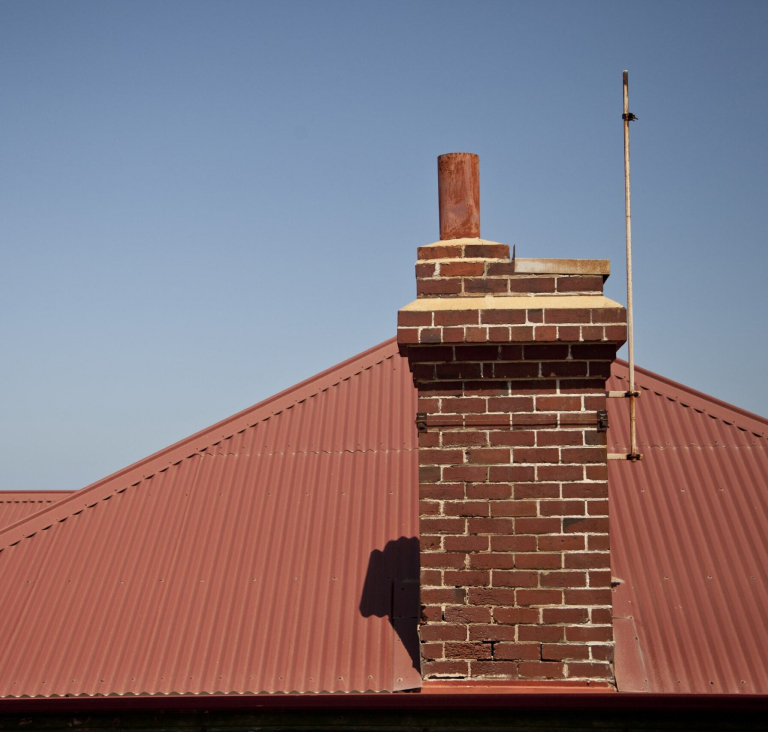Key points
CoreLogic data shows average home prices rose 0.3% in February, after a brief three-month downturn of just 0.4%.
The upswing came in anticipation of, and then confirmation of, an RBA rate cut which boosted buyer confidence.
Annual growth in rents slowed to 4.1%yoy, the slowest since 2021. Poor rental affordability leading to rising average household sizes and easing student arrivals are weighing on demand for rental property.
Australia continues to have a chronic shortage of homes, estimated to be around 200,000 dwellings and possibly as high as 300,000. This partly explains the resilience of home prices despite the rise in mortgage rates since May 2022.
RBA rate cuts are expected to drive a modest upswing in average prices this year. However, while there is still a big housing shortfall in Australia, the upswing will be starting from a point of still poor affordability, interest rates are only likely to fall modestly, and population growth is slowing.
After 4.9% growth last year, we expect average property prices to rise around 3% this year.
Home prices turned back up again in February
After a brief downswing, national average property prices hooked back up in February, reflecting the anticipation and then reality of the RBA starting to cut rates. Most cities saw gains between 0.2%mom to 0.4%mom with the recent losers of Melbourne, Hobart, Canberra and Sydney picking up as the booming cities of the last two years – Brisbane, Adelaide and Perth – continue to slow as poor affordability impacts them.
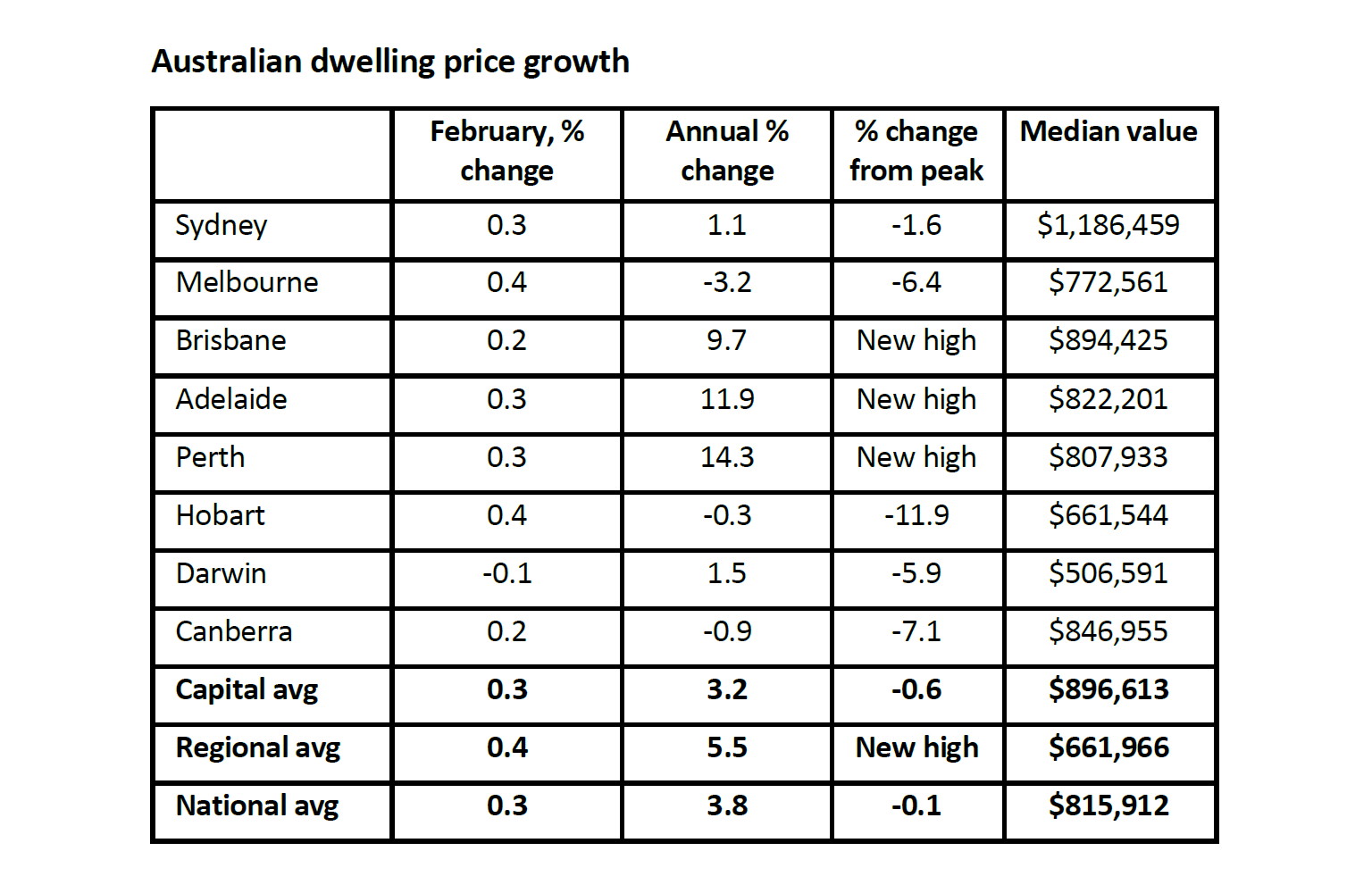
The downswing just saw a 0.4% fall in national average prices spread over 3 months, with falls in Hobart, Canberra, Melbourne, Darwin and Sydney partly offset by continued gains in Brisbane, Adelaide, Perth and regional areas.
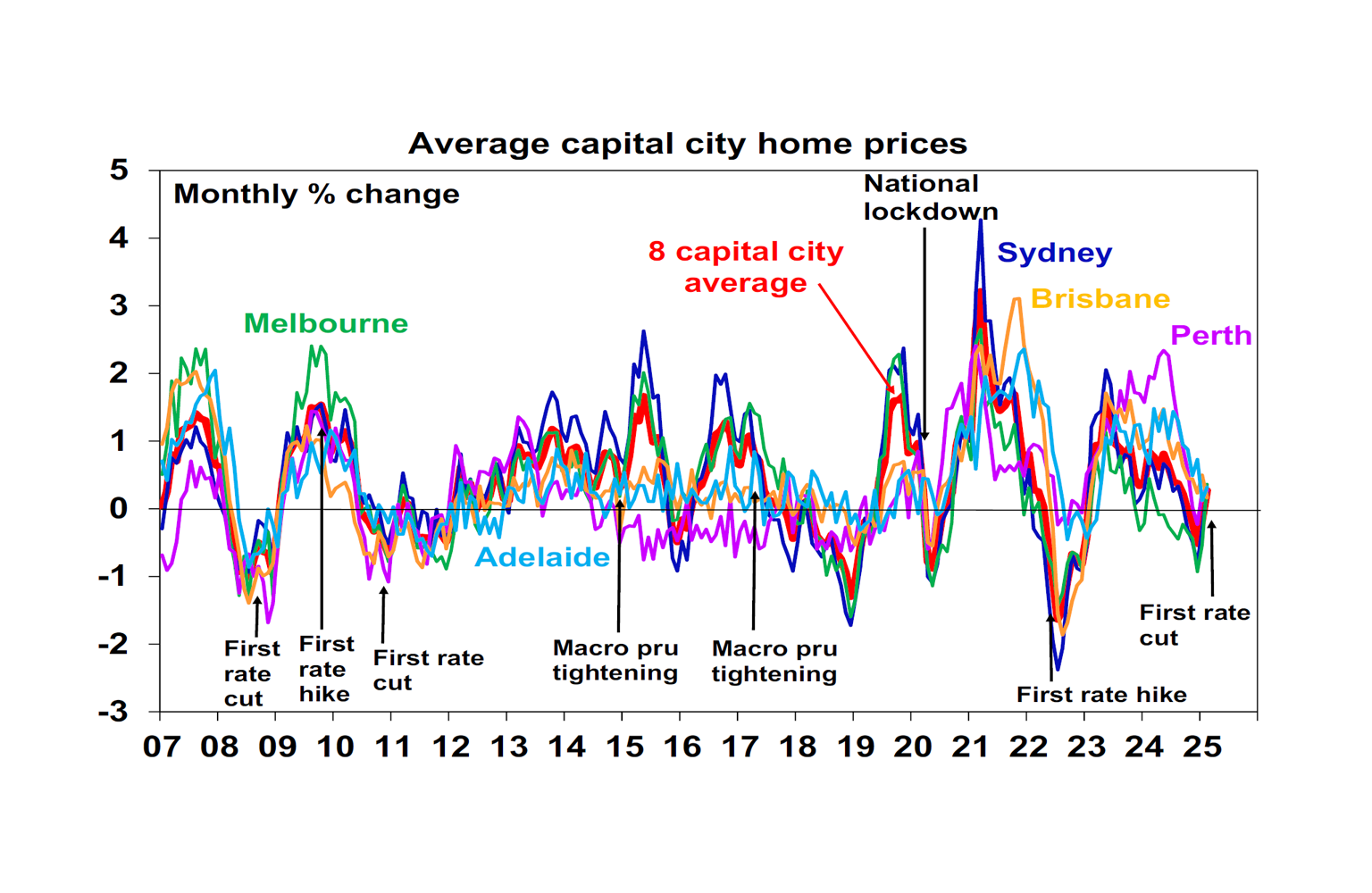
Expect further gains in average property prices
Further gains are likely as interest rates fall further and the shortage of property remains, provided unemployment doesn’t rise too far. The upswing is likely to be more apparent through the second half as we see more rate cuts.
We expect three more RBA 0.25% rate cuts by early next year – in May, August and February. Lower rates are positive for property because they take pressure off existing homeowners who may have been struggling with their mortgages leading to less distressed listings and as they increase the amount a borrower can borrow from a bank and hence pay for a property which supports demand. Buyers know this and so rate cuts also provide a boost to buyer sentiment and that is what we have mostly seen in improved auction clearances and now higher prices so far this year. Roughly speaking the 0.25% rate cut when passed on to variable mortgage rates will add about $9000 to how much a buyer on average earnings can borrow which along with three further rate cuts into early next year will drive a significant increase in the capacity of buyers to pay for a property. See the next chart which also allows for wages growth over the year ahead.
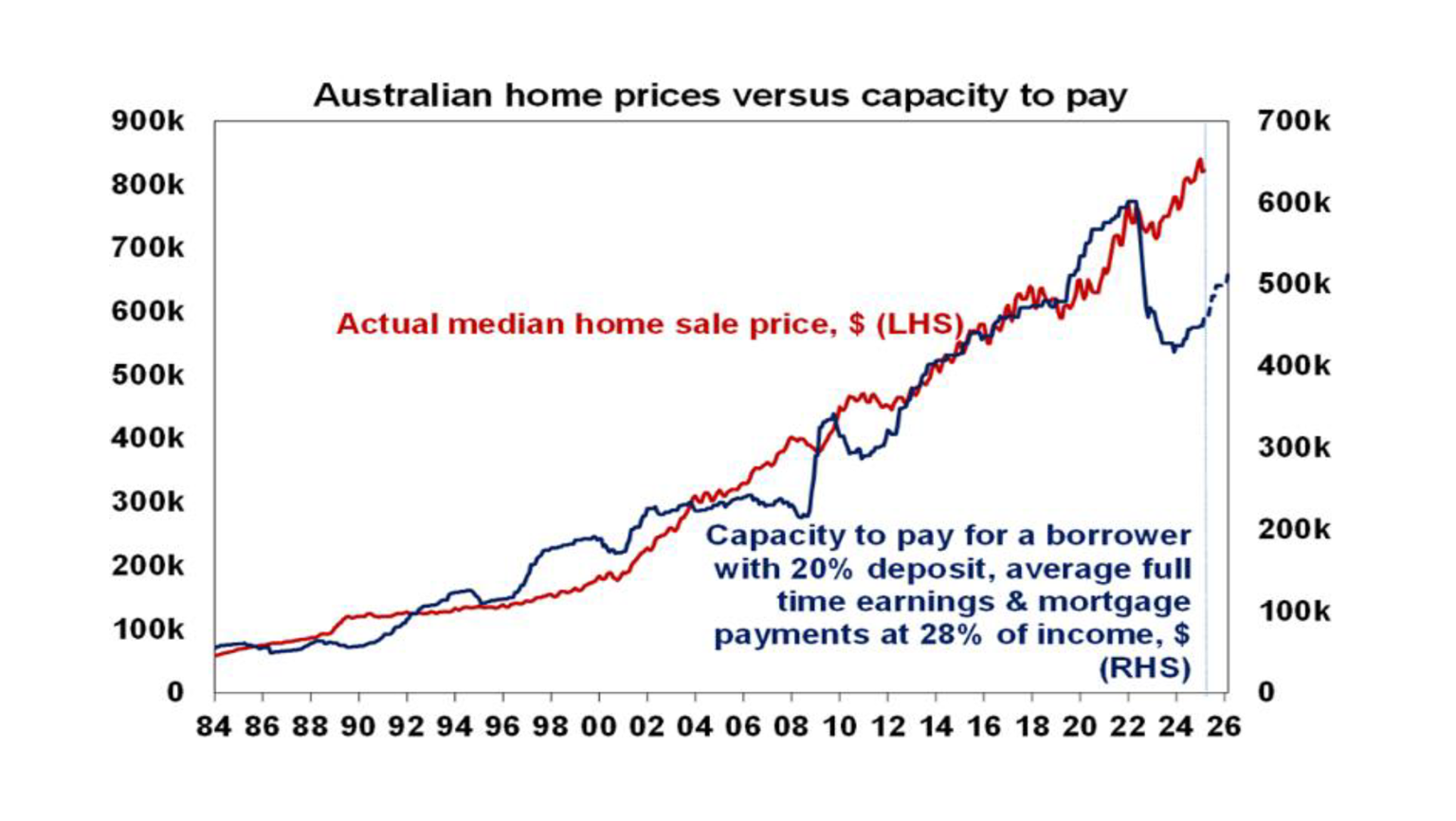
The rate cuts are also occurring against a backdrop of an ongoing housing shortage which we have seen over the last few years provides a source of support for prices. We estimate the accumulated housing shortfall to be around 200,000 dwellings at least, and possibly as high as 300,000 dwellings. It is likely to remain significant for a while yet as building approvals running just above 180,000 dwellings a year indicate that housing completions are likely to run below government objectives for 240,000 homes a year (or 1.2 million over five years) for some time to come and may never reach that objective.

Modest downswing = likely modest upswing
Just as the downswing was mild the upswing is likely to be too. This is because it’s starting from a point of still poor affordability, interest rates are only likely to fall modestly, and population growth is slowing.
Despite the 13 rate hikes between May 2022 and November 2023 average home prices just had a flick of the top into their January low.
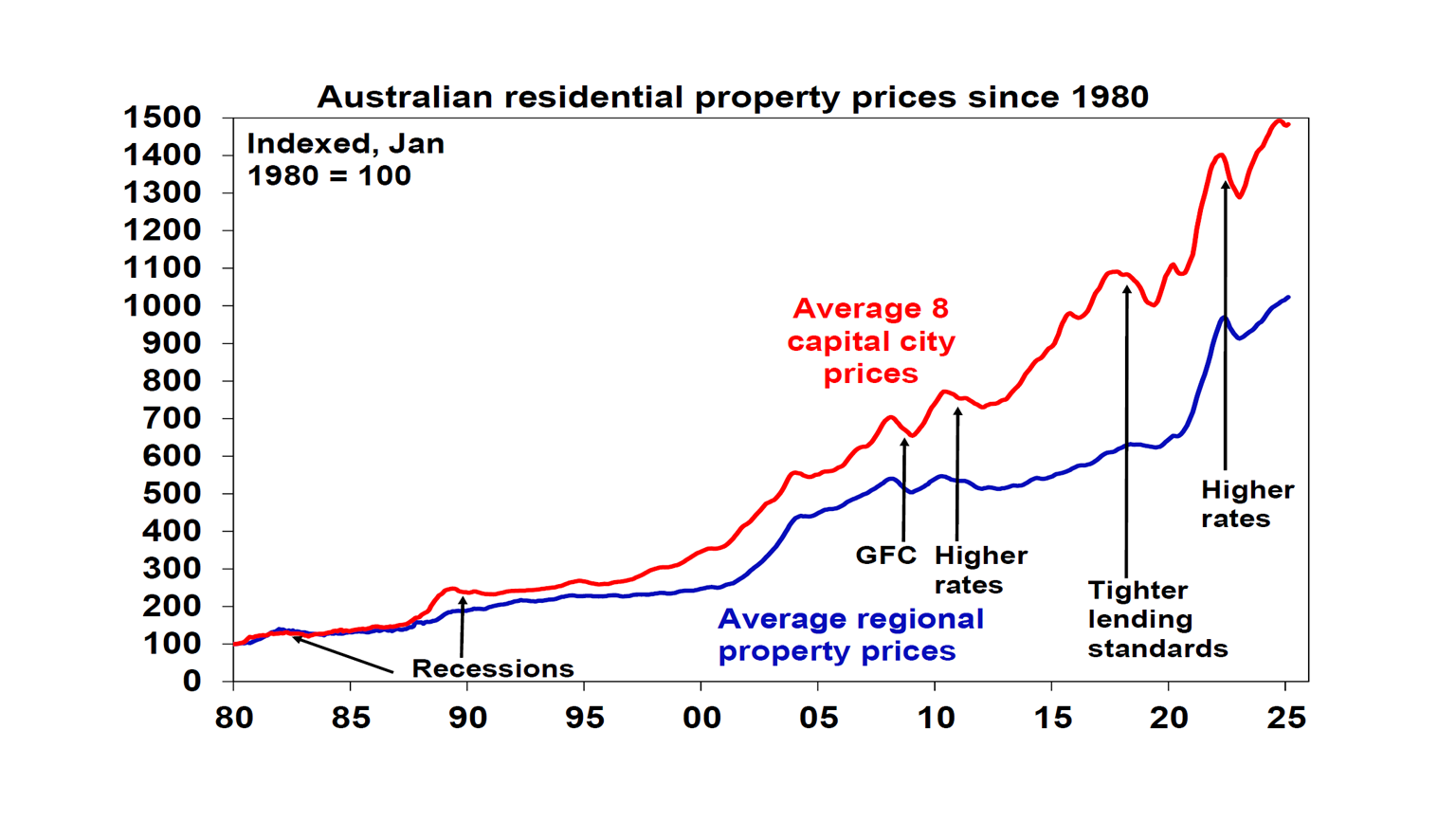
This means housing affordability remains very poor without the usual improvement rate cuts can drive via lower prices. This is evident in the ratio of home prices to wages & incomes being around record levels.

While interest rates are likely to fall further, in the absence of recession and much higher unemployment we only expect about 4 or maybe 5 rate cuts in total, taking the cash rate back to a low of around 3.1 to 3.35% next year and mortgage rates to around 5%. This will only partially reverse the 13 rate hikes between May 2022 to November 2023 and leave mortgage rates well above their record lows of around 2 to 3%. As such, the buying capacity of home buyers is expected to improve but remain well below the levels seen in 2021-22. See the second chart above. This will limit the upside in property prices. And with a large gap likely to remain between average prices and the capacity of borrowers to pay for a new home leaves a downside risk hanging over the market if something goes wrong – like a sharp rise in unemployment.
Slower population growth, reflecting a crackdown on student visas and increasing departures as the post pandemic surge in long term visas expires, will likely lead to a further easing in the rental market which will help take some pressure off the home buyer market.
Divergence in the property market is likely to remain, but in a reversal of the last year with the recent strong cities (Perth, Adelaide and Brisbane) slowing further on the back of poor affordability as they are now more expensive than Melbourne, partly offsetting a further recovery in Melbourne, Hobart, Canberra and Sydney.
So just as the downswing in property prices was modest, the upswing is likely to be modest too. After 4.9% growth last year, we expect average property prices to rise around 3% this year with the upswing becoming more noticeable in the second half.
Auction clearance rates are up from their lows late last year but are running around average levels or a bit below consistent with a gradual recovery in the property market.
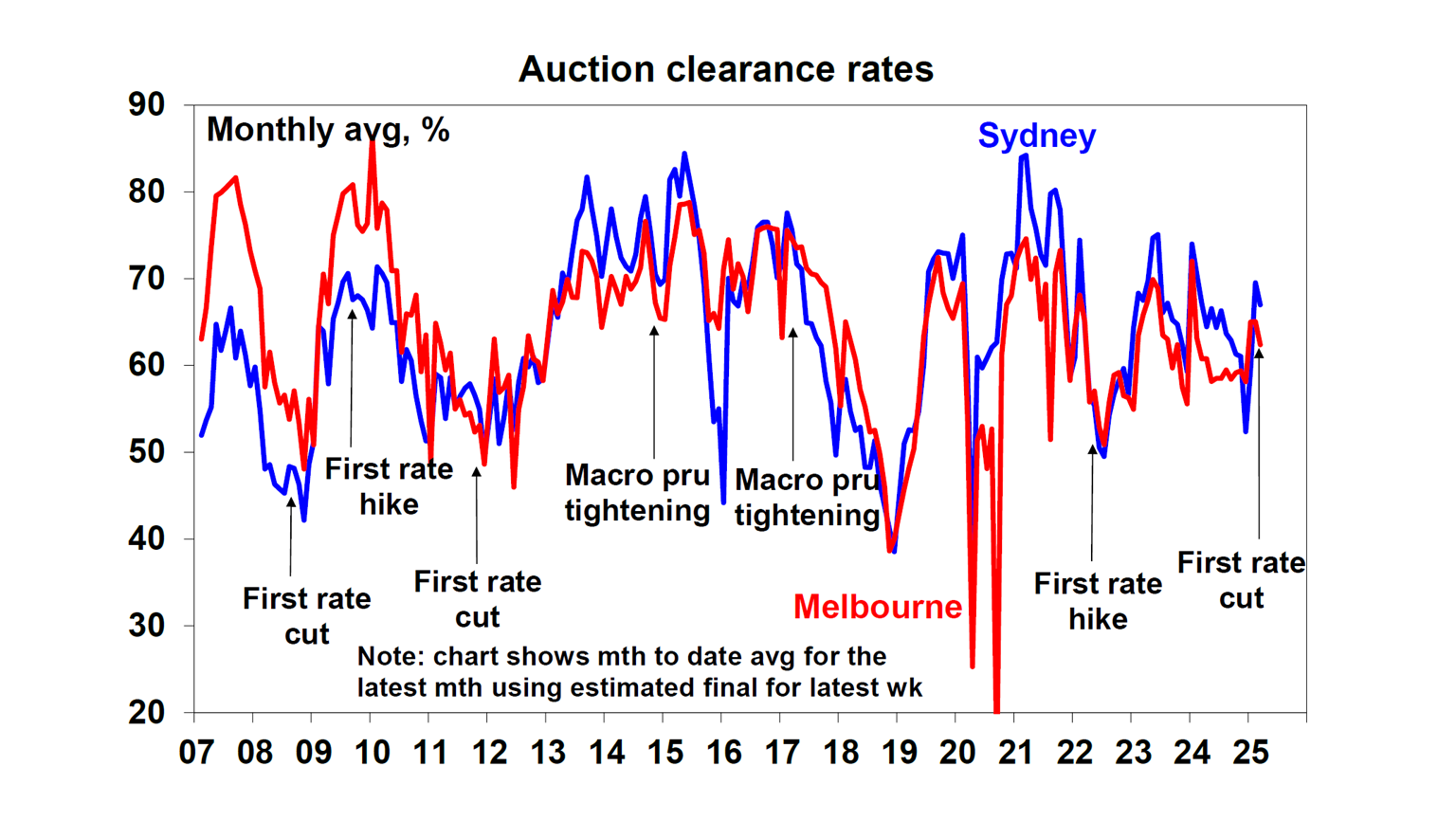
What to watch?
The key things to watch will be interest rates, unemployment and population growth. For example, a return to RBA rate hikes or less cuts than we are forecasting, a sharply rising trend in unemployment and a sharp slowing in net migration could result in a resumption of property price falls reflecting the divergence between home buyers’ capacity to pay and current home price levels. On the flipside a faster fall in rates on the back of weaker than expected inflation could drive a stronger upswing in property prices. And of course, Australian home prices have had a tendency to surprise economists (like me) and many others on the upside over the last few decades.
You may also like
-

Weekly market update - 12-12-2025 Global shares were mixed over the last week with the Fed cutting rates but AI worries remaining. -

Oliver's insights - RBA holds rate with hawkish tones The RBA’s decision to leave rates on hold at 3.6% was no surprise with it being the consensus amongst all 29 economists surveyed by Bloomberg and the money market factoring in zero chance of a change. -

Oliver's Insights 2026 Predictions after 2025 success 2025 initially saw turmoil as US President Trump announced tariffs that were much higher than expected along with a bunch of other moves to upend US institutions and the global economic order. But the global economy held up okay.
Important information
Any advice and information is provided by AWM Services Pty Ltd ABN 15 139 353 496, AFSL No. 366121 (AWM Services) and is general in nature. It hasn’t taken your financial or personal circumstances into account. Taxation issues are complex. You should seek professional advice before deciding to act on any information in this article.
It’s important to consider your particular circumstances and read the relevant Product Disclosure Statement, Target Market Determination or Terms and Conditions, available from AMP at amp.com.au, or by calling 131 267, before deciding what’s right for you. The super coaching session is a super health check and is provided by AWM Services and is general advice only. It does not consider your personal circumstances.
You can read our Financial Services Guide online for information about our services, including the fees and other benefits that AMP companies and their representatives may receive in relation to products and services provided to you. You can also ask us for a hardcopy. All information on this website is subject to change without notice. AWM Services is part of the AMP group.









